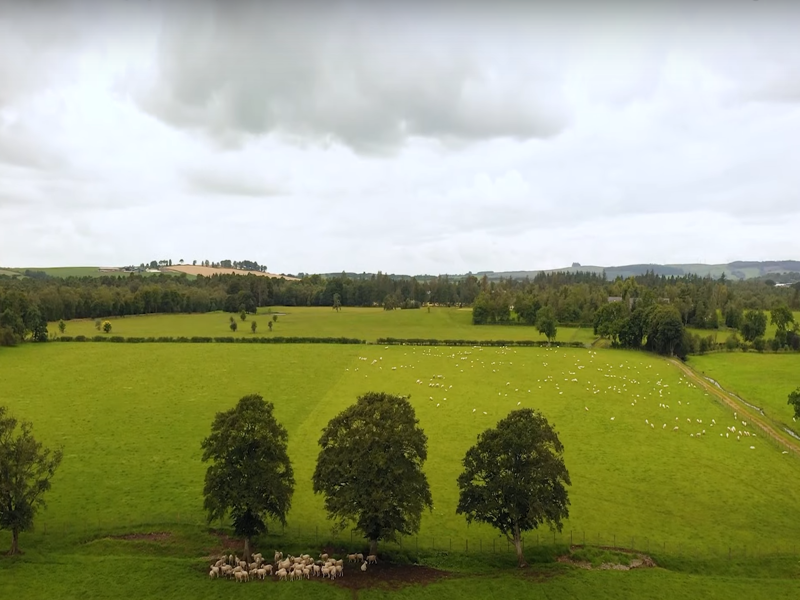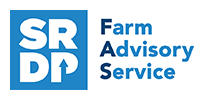Farming for the future
As Scotland works towards being a global leader in sustainable and regenerative agriculture a new four tier framework of agricultural support will be launched. The new framework will deliver high quality, local, and nutritious food, while restoring nature and mitigating and adapting to climate change in the transition to Net Zero.
This transition will be a phased approach, starting from 2025 when recipients of farm payments will need to have a Whole Farm Plan in place. For full details see the Scottish Government's Whole Farm Plan guidance.
If you are applying for support through the Basic Payment Scheme, it is also mandatory that you comply with Greening requirements. On this page you will find guidance on these requirements and what you can do on your farm.
As part of the Scottish Agricultural Reform programme the Scottish Suckler Beef Support Scheme (SSBSS, also known as the “calf scheme”) will continue until at least 2028, but the conditions for eligibility are changing from 2025. Further information is available at the bottom of this page

Enhanced Greening - 2026
From 1st January 2026, farmers and crofters with more than 15 hectares of arable land (including Temporary Grass) will need to manage Ecological Focus Areas (EFAs) - areas of land managed for the benefit of the climate and the environment. This section will help you understand those requirements and what you need to do on your farm.
Greening applies to two areas, permanent grassland, and ecological focus areas, or EFAs.
Important note: While in the past there were a number of exemptions in place for greening requirements, the new enhanced greening rules are much more all-encompassing. Therefore, if in doubt, assume they do apply to you or speak with your agricultural consultant to get a better understanding.
Key Dates
Print this one-pager out to help you remember the important dates related to greening in Scotland.
Listen to our Rural Roundup podcast on Enhanced Greening with guest speaker Professor Steven Thomson of SRUC.
Permanent Grassland
Permanent grassland is land used to grow grasses or other herbaceous forage, either naturally (self-seeded including ‘rough grazing’) or through cultivation (sown), and which is more than five years old.
Requirements:
- The ratio of permanent grassland compared to the total agricultural area declared must not decrease by more than 5%. The maintenance of this ratio will be monitored at a national level not individual farm level.
- Permanent grassland that is designated as Environmentally Sensitive Grassland (ESG) must not be converter or ploughed.
Key Considerations
- If you cultivate permanent grassland to establish any other crop apart from grass, the land will convert to arable and future grass will be temporary (for at least five years). Temporary grassland is land that has been in grass or other herbaceous forage for five years or less.
- If you cultivate permanent grass and immediately sow a new grass ley, the land will retain its status as permanent grass.
- If you use some of your permanent grassland area as Ecological Focus Area (EFA), i.e. a buffer strip or field margin, this area of EFA is classed as arable land and must be included in the greening arable area calculation.
- Permanent grassland areas that are used as EFAs should be claimed as Permanent Cover (PC) on your Single Application Form (SAF).
Ecological Focus Areas
An Ecological Focus Area is an area of land upon which you carry out agricultural practices that are beneficial for the climate and the environment.
Unless exempt you will be required to put at least 5% of your calculated arable area into one or more of the eleven types of EFA and prepare a map with your Single Application Form detailing the type, location and size of each EFA feature.
EFA Options

For 2026, there are eleven EFA options that can be used on their own or in combination to meet your EFA requirement. Each EFA option has its own unique obligations, and we have produced a quick guides for each option to help you identify if you are within compliance. More information will be added in due course.
Further information about these can be found on the Rural Payments and Services website.
Preparing for a Land-Based Inspection
The Scottish Government Rural Payments and Inspections Division are required by Scottish Government to carry out checks on each scheme claimed on the Single Application Form (SAF) through spot inspections. Greening checks form a key part of these inspections.
We have produced a detailed factsheet to help you understand and prepare for the chance of an inspection.
What is the Whole Farm Plan?
The Whole Farm Plan will help farmers and crofters to identify opportunities for improvement and support you to work towards more sustainable and profitable systems.
The Whole Farm Plan will be at the core of the transition from CAP Legacy schemes to Scotland’s new support framework. By establishing their current performance and activities, businesses will be better able to identify opportunities for improvement and work towards being more productive and profitable. This also helps contribute to meeting Scotland’s climate and nature targets.
Farmers and crofters were asked to prepare for the Whole Farm Plan by undertaking at least two baseline plans or audits from those below by 15 May 2025. This requirement will remain the same for 2026.
The Whole Farm Plan will be fully implemented in 2028 with a mandatory requirement for farmers and crofters to have completed all audits/plans which are applicable to their business. If you are looking for a summary of what is required by 2025 and 2028 respectively then have a read of this article.
The animal health and welfare plan is applicable to businesses keeping livestock (cattle, sheep, goats, deer, alpacas, llamas, pigs, or over 350 poultry). Developed with the support of your vet, this plan enhances livestock health and welfare while improving performance and efficiency. It includes a biosecurity risk assessment, key performance indicators, a euthanasia policy and a health management plan.
Getting started
Our guide on Getting started with an Animal Health & Welfare Plan will help you find the information you need and ensure you get the most out of health planning discussions with your farm vet.
QMS have also produced an animal health and welfare plan that can help you through the process. The videos below will take you through the finer detail.
A biodiversity audit is applicable to all businesses. By completing a basic habitat map you gain an accurate picture of the habitats on your farm or croft, helping you to make management decisions to protect and enhance biodiversity. The audit is something which farmers and crofters can easily complete themselves, with the minimum required being to mark one habitat per field on your farm and croft along with any linear features which do not show on Ordnance Survey mapping. There is a key on the Rural and Payments Services website which lists all the habitats that are available to select from.
There are multiple ways to complete the map and maps should be updated every 5 years.
How to map:
- using the Map Viewer on Rural Payments & Services (RP&S)
- submit Habitat maps generated on your own mapping system (including shapefiles) using the RP&S Map Viewer
- provide a map of key habitats and linear features to the Land Mapping Team and they will upload it to LPIS on your behalf
- provide the Land Mapping Team with a list of Land Parcel Identification numbers and the habitat that best describes most of the land cover for each field/land parcel
- take part in the piloting of the NatureScot Farm Biodiversity Scotland digital tool in 2024 and 2025. You can sign up to the 2025 pilot on the NatureScot website
If you use any of the bottom 3 options from that list, you need to supply your map or list directly to the Land Mapping Team mailbox at landmappingteam@gov.scot or by post to the address below. Maps should not be uploaded to the SAF form.
Land Mapping Team
D1 Spur, Land Mapping Team
Saughton House
Broomhouse Drive
Edinburgh
EH11 3XD
The resources below will provide you with a range of useful information for completing your habitat map. The video on the left is an overview of what a biodiversity audit needs to include with common questions being answered by Scottish Government and NatureScot. The middle video includes a demo of how to complete your map on the RP&S Map Viewer as well as an information guide on identifying common habitats.
For further information about biodiversity in Scottish agriculture, you can visit our Biodiversity page.
Help with Habitat Mapping
This webinar provides guidance and support on the habitat key, identifying habitats on farm and more detail on the three methods by which you can complete a habitat map.
Identifying Habitats and Mapping
In this webinar we look at identifying the habitats you have on your land AND how to map them using the Rural Payments Land Mapping System.
Ensuring natural habitats are protected and restored is crucial in achieving Scotland’s future biodiversity targets. With 75% of Scotland’s land being used for agriculture, the farming sector plays a vital role in conserving wildlife. Identifying farmland habitats helps land managers better understand the habitats on their farm and the condition that these are in. This can help you prioritise management actions that will benefit the environment and that are in line with the direction of the business.
FAS carbon audits have been paused for the time being. Please click on the link below to the FAS carbon audits page for more information.
A carbon audit helps you to understand your farm or croft’s carbon footprint and identify the quantity and source of greenhouse gas emissions. It highlights opportunities for business and environmental improvement, and is applicable to all businesses.
Carbon audits should be reviewed and updated every 5 years with recommendations for reducing emissions. A carbon audit completed any time in the five years prior to support claims will be accepted.
Getting started
The content below will give you a clearer idea of what a carbon audit entails. Further information can be found on the FAS carbon audits page and carbon reporting page.
How to prepare for a carbon audit
As the number of farming and crofting businesses looking to complete a carbon audit increases, we have created a handy checklist to make the process much easier. This checklist gives you an overview of the information required so you can collate the information required before you even sit down with the carbon calculator in front of you.
Carbon Audits for Beef Enterprises
You can use Agrecalc to benchmark your business against other similar businesses, but it is important to use accurate data. This allows you to measure the changes to emissions your business makes over time as you implement improvements and become more efficient.
Carbon audits for dairy farms
Carbon Auditing is an important tool for dairy farming businesses as it not only gives a figure for Greenhouse Gas Emissions per litre of milk produced but can also be used to determine the efficiency of a business and highlight areas where improvements can be made.
IPM is an approach for the prevention, detection and control of plant pests, diseases and weeds using measures such as crop rotations and using resistant crop varieties. If you use Plant Protection Products you need an IPM Plan to demonstrate that their use is justified.
This infographic from Arable Scotland gives a great overview of the effects of IPM and how to improve your own IPM score.
To complete an Integrated Pest Management plan, there is a free tool available from the Scottish Plant Health centre and you can access this here
Understanding IPM
Integrated Pest Management (IPM) combines a range of tools to more efficiently target the application of plant protection products thereby reducing the risk of pesticide resistance.
IPM assessment plans
These are designed to facilitate discussions between crop protection decision makers aiming to increase IPM adoption. They take between 20-30 mins to complete.
IPM technical note
This technical note seeks to give a detailed overview of the benefits of IPM, what it means in practice for agricultural workers and farmers, and the reasons for undertaking an IPM plan.
If you have Region 1 land and apply any fertilisers or organic manures you need to undertake soil analysis. This enables you to target nutrient applications where they are needed most, improving efficiency of fertiliser use.
Getting started
This article on preparing for sustainable farming will give you an overview of several different ways you can prepare for the whole farm plan, including soil sampling and analysis
There are also two practical guides available on how to take a soil sample and the benefits of soil sampling to your business.
How to interpret your soil analysis
What to do with the information that you receive when you run a routine soil analysis and what this means regarding your soils and your agronomic decisions.
Managing fertiliser costs
Using less fertiliser can be a false economy if reductions in yield and quality exceed any savings made. So, while it is a valid strategy, care needs to be taken.
Soil biodiversity and health
Soil biodiversity is the variety of living organisms within a soil. A healthy soil will contain a large number and variety of organisms. Increasing biodiversity will increase the resilience of the soil.
Scottish Suckler Beef Support Scheme
In addition to the existing conditions which have been in place since 2015, an individual dam calving interval condition is being introduced. Calving interval (the period of time between one registered birth and another) is a key efficiency metric for suckler herds and by focusing on reducing this, businesses will become more productive and profitable, while also helping contribute to meeting Scotland’s climate targets.
For more information on the changes to SSBSS conditionality from 2025 you can read the Rural Payments SSBSS FAQ.
Further information on nutrition, bull fertility, and health, visit the beef section of the site.
How Should Suckler Cow Herds Prepare For Changes To Support
This article has been written to advise farmers on changes to the SSBSS and actions you can take to prepare for these.
How to Look up Calving Intervals on MyHerdStats
MyHerdStats can be used to identify how many and which cows fail to meet the 410-day calving interval threshold being introduced from 2025 onwards.
Management Matters: SSBSS
Payment rates, potential financial impacts and management matters to consider.
Further questions
If you have any further questions, you can contact the advice line by emailing advice@fas.scot or by calling 0300 3230161.
Further support with your WFP application is also available from your nearest RPID Area Office.
Sign up to the FAS newsletter
Receive updates on news, events and publications from Scotland’s Farm Advisory Service











